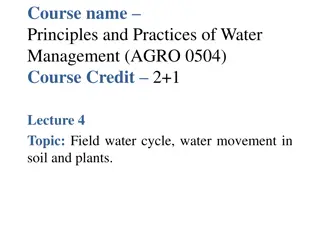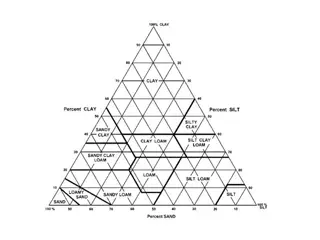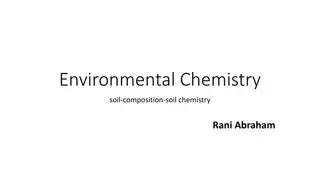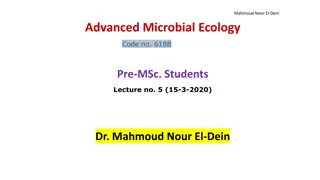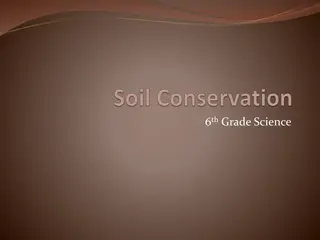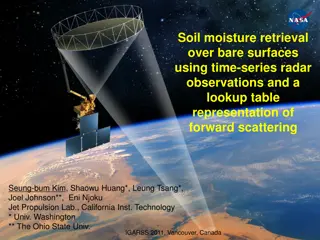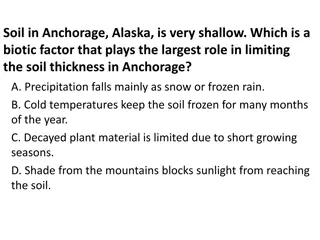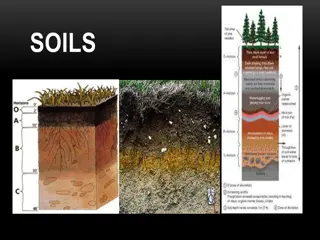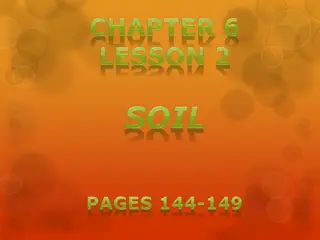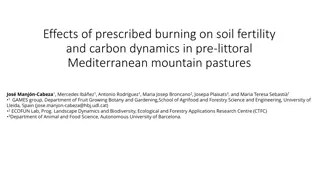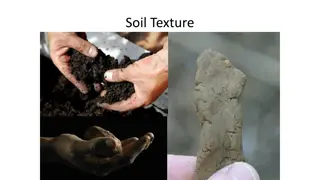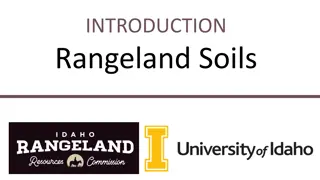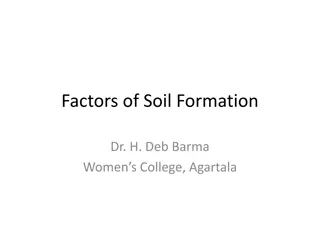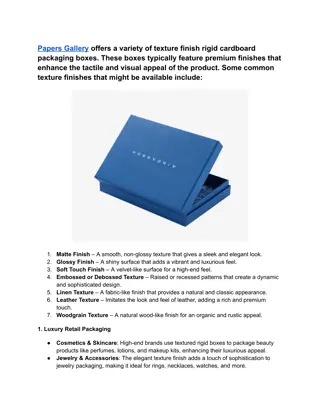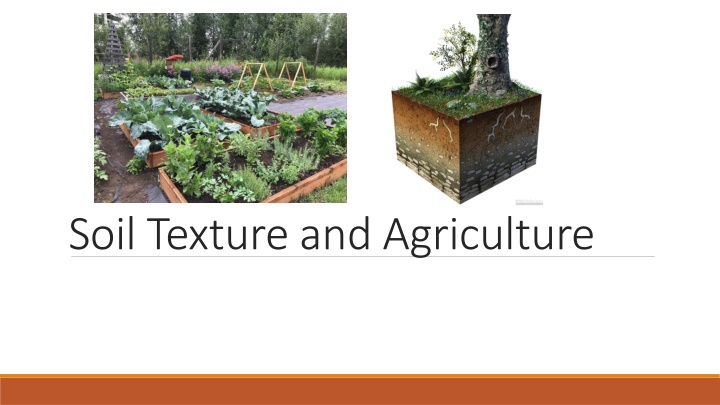
Soil Texture for Effective Agriculture
Explore the diverse soil particles sizes of sand, silt, and clay, each with distinctive characteristics and influences on soil properties in agriculture. Learn how parent materials and organic matter play crucial roles in soil quality and understand the importance of texture in soil management for optimal crop growth.
Download Presentation

Please find below an Image/Link to download the presentation.
The content on the website is provided AS IS for your information and personal use only. It may not be sold, licensed, or shared on other websites without obtaining consent from the author. If you encounter any issues during the download, it is possible that the publisher has removed the file from their server.
You are allowed to download the files provided on this website for personal or commercial use, subject to the condition that they are used lawfully. All files are the property of their respective owners.
The content on the website is provided AS IS for your information and personal use only. It may not be sold, licensed, or shared on other websites without obtaining consent from the author.
E N D
Presentation Transcript
Soil Particles Most soils have a combination of soil particles sizes Sand Silt Clay
Particle Sizes Clay: less than 0.002 mm Silt: 0.002-0.005 mm Sand: 0.05-2 mm 0.05-0.24 mm fine 0.25-0.49 mm medium 0.5-0.99 mm coarse 1- 2 mm very coarse Gravels: 2-75 mm Cobbles:75-250 mm Stones: 250-600 mm Boulders: >600 mm
Sand Gritty feel Can be seen with the naked eye Hand sampling: No residue left on hand
Silt Dry: Powdery smooth feel, flour-like Wet: Creamy slick, slippery feel No sticky or plastic feel Can be seen with a hand lens or microscope Hand sampling: Coats hand, able to brush off
Clay Dry: Hard feel Wet: Sticky, plastic feel Can be seen with an electron microscope Hand Sampling: Sticks to fingers
Influences of Soil Properties Parent Material: Rock or original source of soil particles Effects soil quality Glacial outwash sands tend to be infertile, or hold few minerals and nutrients important for growth Soils derived from other sources may be relatively rich in minerals and nutrients Usually a combination of weathered parent materials and organic matter make a soil
Influences of Soil Properties Organic Matter is derived from decomposing plant and animal remains Humus is the dark, moist layer found on the top of a soil profile. This is because it is made up of dead and decaying matter. It is fairly fertile in that the decay process adds nutrients to the soil that plants love to soak up
Sources of Parent Material Weathering or erosive actions: heating/cooling freezing/thawing glaciers water wind chemistry plants & animals
Soil Texture and Surface Area As particle size decreases, surface area increases Clay has about 10,000 times as much surface area as sand Surface area has a big effect on: Water holding capacity Chemical reactions Soil cohesion Ability to support microorganisms
Properties Related to Texture Porosity Permeability Infiltration Shrink-swell Water holding Capacity Erodibility
Fine Textured Soil Large amounts of silt and clay, making it "muddy" when wet Pore spaces are small, but numerous and hold more water As clay soils begin to dry, they may still hold large quantities of water, but adhesive and cohesive properties of water make it unavailable for root uptake
Coarse Textured Soil Large pore spaces and allows water to easily run through it beyond the reach of roots Drought-prone Little surface area for the particle volume, reducing fertility
Loamy Soil A mix of sand, silt, and clay that optimizes agricultural productivity
Sand + Silt + Clay = 100% 34 % Sand 33 % Silt 33 % Clay Texture = CLAY LOAM

